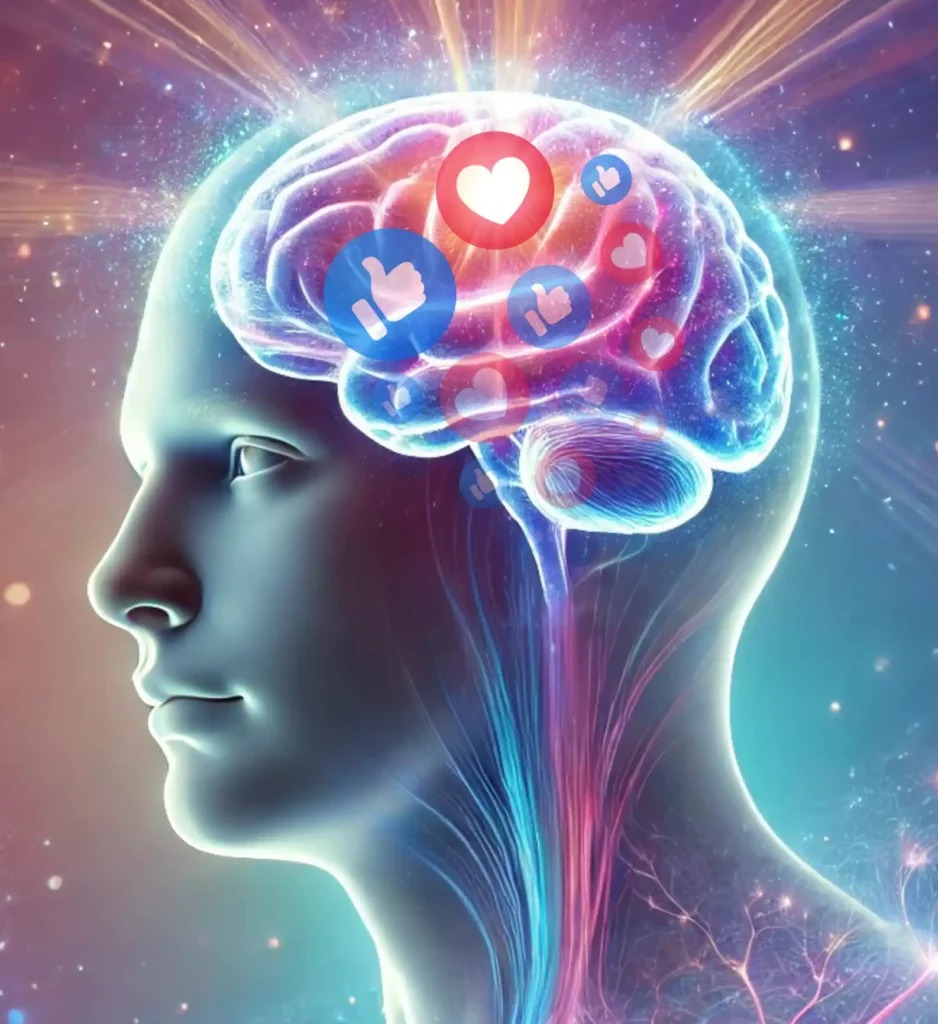The Dopamine Effect: Why Viral Content is So Addictive.

In the digital age, viral content spreads like wildfire, captivating millions worldwide. But what drives people to share, like, and engage with viral content? The answer lies in our brain chemistry—specifically, dopamine, the neurotransmitter responsible for pleasure, motivation, and reward. Understanding the role of dopamine in social sharing can help marketers and content creators craft highly shareable content that resonates with audiences.
The Science Behind Dopamine and Social Media
Every time we receive a like, comment, or share on social media, our brain releases a small surge of dopamine, making us feel rewarded. This reinforcement makes users crave more interactions, driving them to engage with and share content continuously.
How Dopamine Fuels Content Sharing
- Instant Gratification – Seeing immediate engagement on a post triggers a dopamine release, encouraging users to post and share more.
- Social Validation – Receiving likes and comments gives a sense of belonging and approval, reinforcing the habit of sharing.
- Anticipation of Reward – The unpredictability of engagement (whether a post will go viral) keeps users coming back, much like a slot machine effect.
- Emotional Resonance – Content that sparks strong emotions (joy, anger, awe) leads to higher dopamine levels, increasing the likelihood of shares.
The Key Elements of Viral Content
To maximize dopamine-driven engagement, viral content often includes these elements:
1. Emotional Triggers
Emotions are powerful motivators. Viral content often evokes strong feelings such as:
- Joy and Humor – Funny memes and feel-good stories spread rapidly.
- Awe and Inspiration – Motivational content fuels a sense of wonder.
- Anger and Controversy – Polarizing content provokes discussion and engagement.
2. Relatability and Personal Connection
People share content that reflects their identity, values, or experiences. Relatable memes, personal stories, and user-generated content encourage sharing within social circles.
3. Surprise and Novelty
Unexpected or unique content captures attention. Unusual facts, shocking revelations, or creative twists make people more likely to share with their networks.
4. Simple and Snackable Format
Bite-sized, easily digestible content (e.g., short videos, infographics, GIFs) is more likely to be shared. Simple messages with clear takeaways enhance engagement.
5. Call to Action (CTA) and Social Proof
Encouraging users to “tag a friend” or “share if you agree” increases content circulation. Seeing others engage with content provides validation and motivates further sharing.
How Marketers Can Leverage Dopamine for Virality
- Create Emotionally Charged Content – Focus on storytelling that evokes strong emotional responses.
- Optimize for Engagement – Use catchy headlines, compelling visuals, and interactive elements.
- Encourage User Participation – Contests, challenges, and polls foster interaction and sharing.
- Tap into Trends and Memes – Aligning with current trends increases visibility and relatability.
- Use FOMO (Fear of Missing Out) – Limited-time offers and exclusive content drive urgency to engage and share.
Conclusion
Dopamine plays a fundamental role in why people love viral content and continue sharing it. By creating emotionally engaging, relatable, and rewarding content, marketers can tap into this natural brain response, increasing reach and engagement. Understanding the science behind social sharing can help brands craft viral-worthy content that leaves a lasting impact.